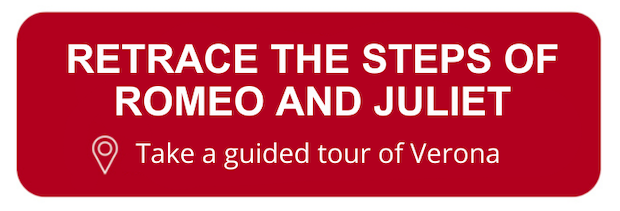There is no world without Verona walls. But purgatory, torture, hell itself.
- Shakespeare, Romeo and Juliet, Act 3 Scene 3
Magnificent Verona is one of the great cities of northern Italy. Spectacularly sited on the banks of the river Adige with the snow-capped peaks of the Dolomites extending off the north and Lake Garda just a stone’s throw away, the city’s easy charms and beautiful monuments have attracted visitors and writers for centuries. This week on our blog we’re following in the footsteps of some of the great writers whose imaginations were fired by their sojourns in Verona, from Dante to Goethe, Dickens and beyond. And then of course there’s the small matter of the greatest of them all: when William Shakespeare chose to set his tragedy Romeo and Juliet here in 1597, he ensured that Verona would become a pilgrimage destination for romantics of all stripes for centuries to come.
Read on to discover the city landmarks that inspired some of the greatest writers to ever lay pen to paper, and find out why fair Verona is a must-visit city in Italy!
Shakespeare: Casa Giulietta
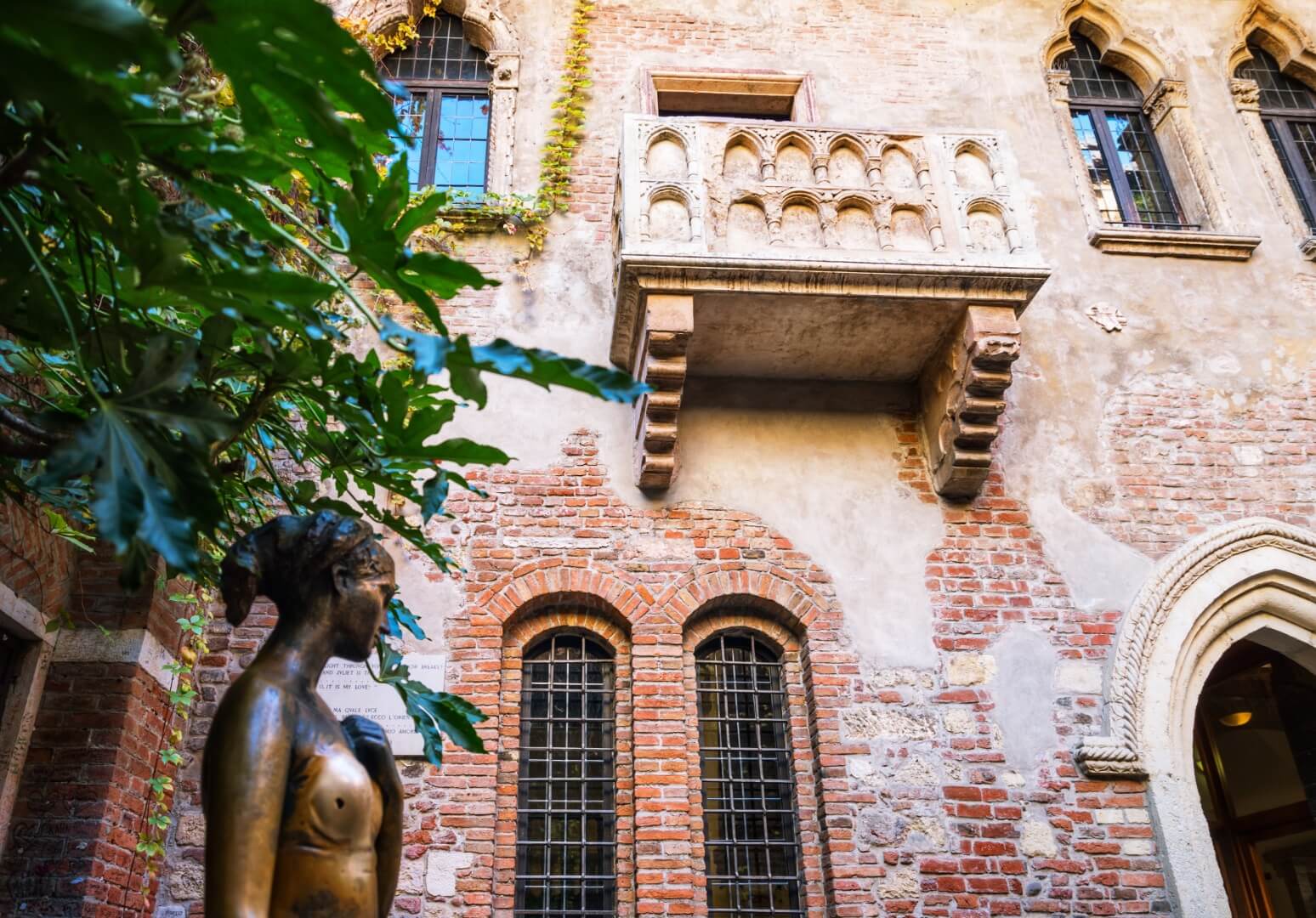
Two households, both alike in dignity, / In fair Verona, where we lay our scene, / From ancient grudge break to new mutiny, / Where civil blood makes civil hands unclean.
Where else to start our literary tour of Verona than the (sort-of) home of Juliet, one half of literature’s greatest pair of star-crossed lovers? Long-standing popular tradition has this 13th-century tower house as residence of the Cappelletti family, probable inspiration for Shakespeare’s Capulet clan, and a bas-relief depicting a hat (cappello in Italian) seems to confirm the link. The building’s current medieval aspect is a modern fudge, however, the fruit of a restoration at the beginning of the 20th century that sought to loosely conjure the distant world of the Middle Ages without being overly concerned with historical accuracy. Central to the restoration was the installation of what would become one of the world’s most famous balconies, now forever associated with Juliet’s immortal line “O Romeo, Romeo, wherefore art thou Romeo?” Little matter that Shakespeare’s original stage directions have Juliet appear at a window and balconies were unknown in Elizabethan England - embrace your inner romantic and accept that sometimes facts are no match for the magic of fiction.
Dante: The Scaliger Tombs
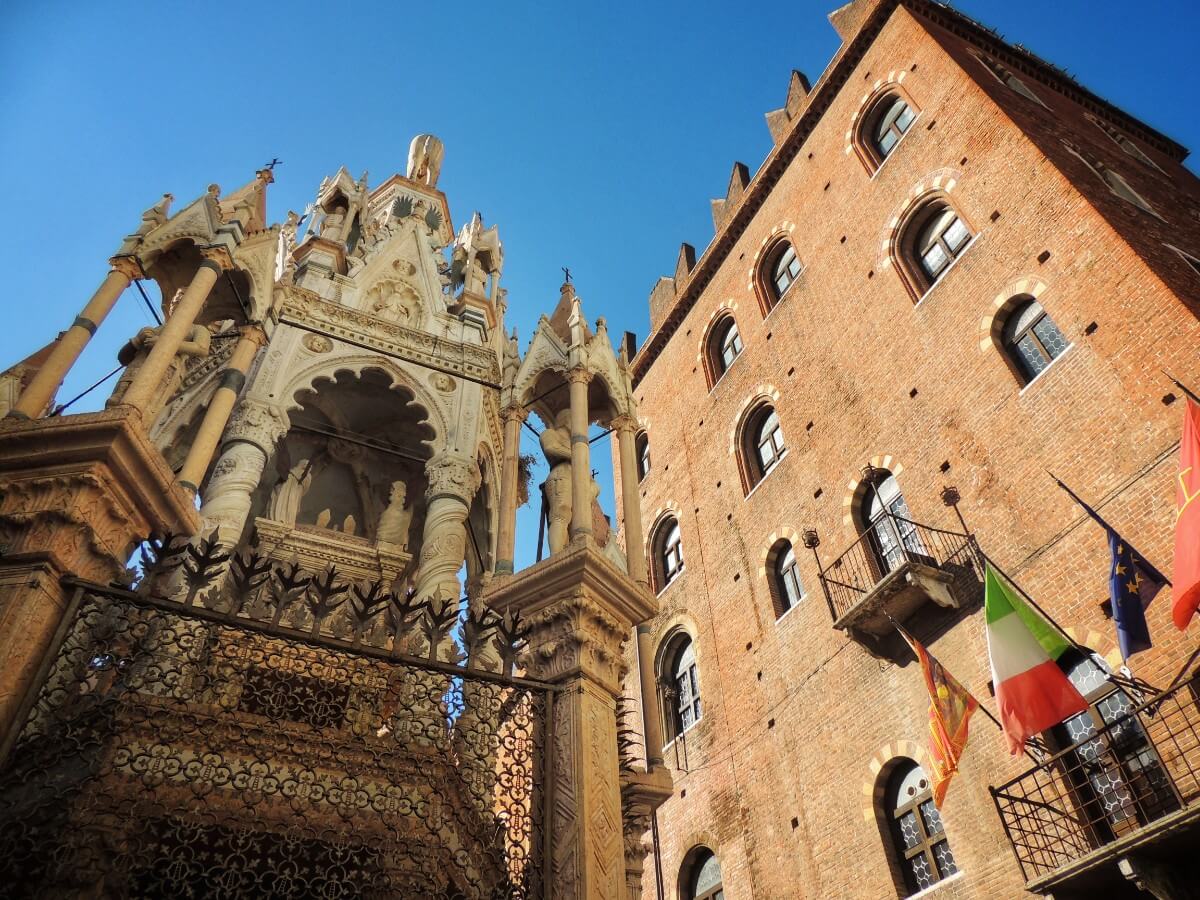
Your first refuge and your first inn shall be / the courtesy of the great Lombard, / he who on the ladder bears the sacred bird.
Dante Aligheri left Florence under a cloud in 1302, a victim of political machinations. He was never to return. You probably know that the great poet lived out the final years of his life in Ravenna, where his beautiful tomb is a must-visit, but did you know that Dante spent more than 7 years of his exile in Verona? Dante first arrived in the city in 1303 as the guest of the powerful Bartolomeo della Scala, before returning for a second spell in the city at the behest of Bartolomeo’s brother Cangrande in 1312. Dante would remain in Verona until 1318, and penned much of his Paradiso here under the protection of the Scaliger (della Scala) clan, to whom he dedicated the text.
A statue of the great poet stands watch over central Piazza delle Erbe, but to get a real sense of the Verona Dante knew we must head to the courtyard of the church of Santa Maria Antica, and pay homage at the fabulous Gothic tombs of the Scaligers. These elaborate free-standing sepulchres were erected as the final resting places of the most eminent members of the family during their 14th-century rule, including Dante’s great patron Cangrande who sits astride a horse atop the baldachin of his tomb. As true masterpieces of Italian Gothic art, the Scaliger tombs are a must-see in Verona.
Catullus: Ponte Pietra
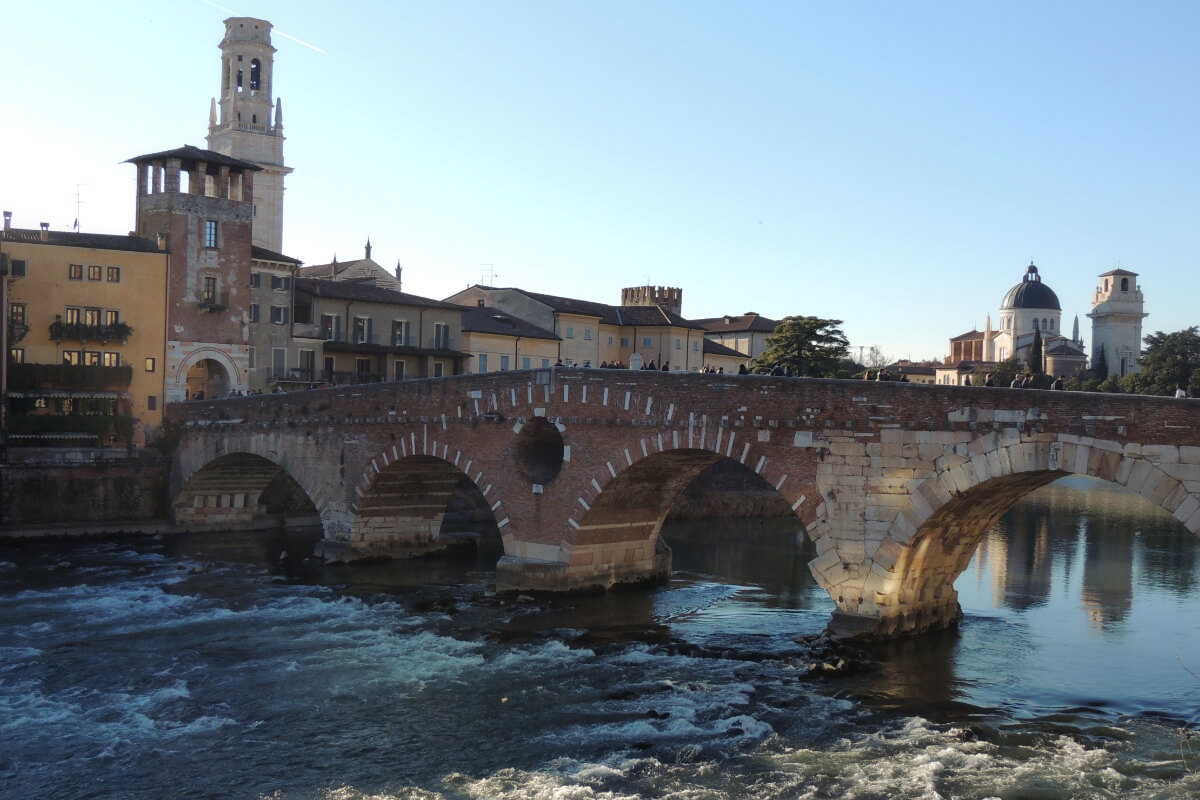
By ways remote and distant waters sped, / Brother, to thy sad grave-side am I come, / That I may give the last gifts to the dead, / And vainly parley with thine ashes dumb:
The story of Verona extends all the way back to antiquity, when the city rose to prominence as an important stopping-off point for long and dangerous journeys across the Alps. Amongst its most famous ancient sons was the poet Catullus, whose frequently humorous and frankly erotic verses (often in praise of his beloved fellow poet Lesbia) would have a great impact on subsequent classical heavyweights like Virgil and Ovid. There are numerous surviving monuments from the ancient Verona that Catullus would have known growing up, including the magnificent Ponte Pietra: a stone bridge dating from the 1st century BC that spans the rushing waters of the river Adige. Blown up by German troops as they left the city in 1945, locals painstakingly collected the fragments from the river and restored the bridge after the war.
Goethe: The Giusti Gardens
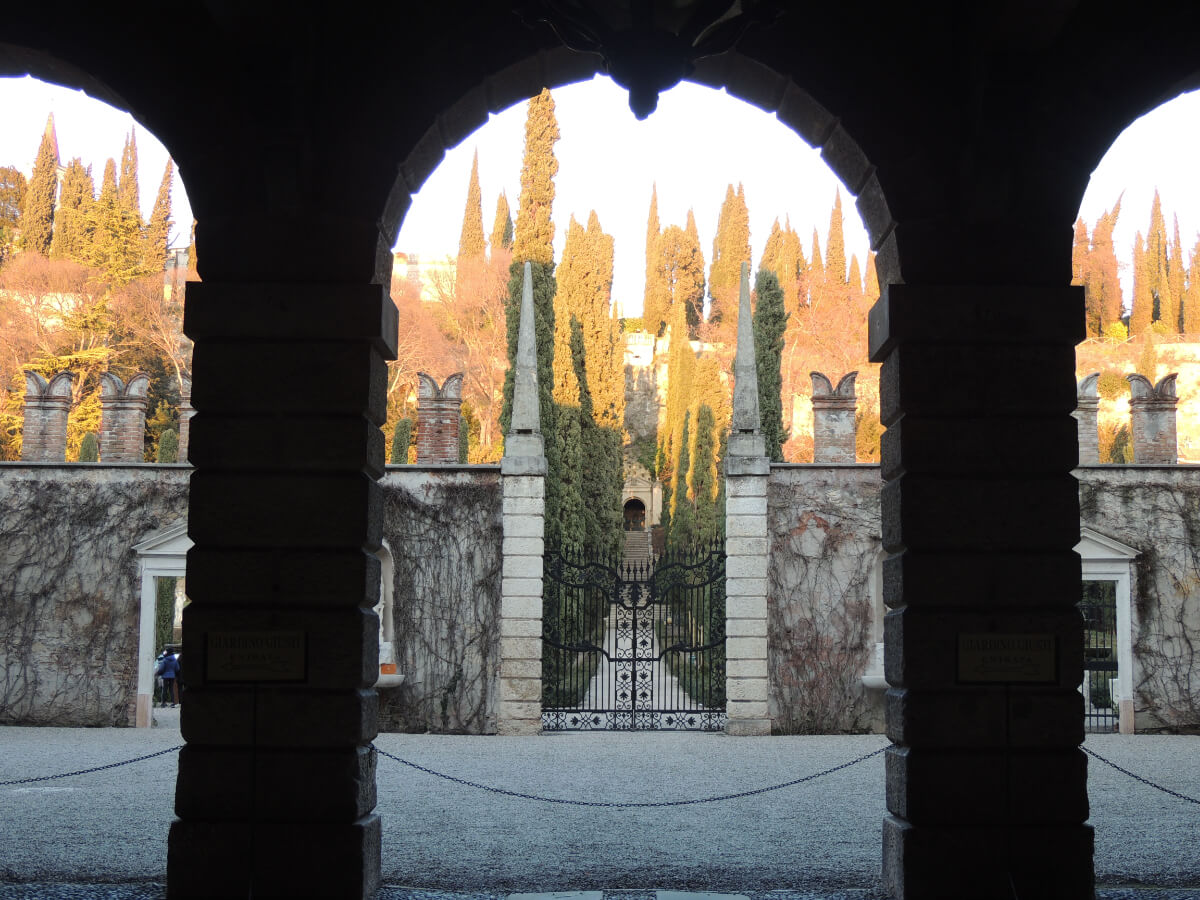
"I had picked them in the Giardino Giusti, where huge cypresses soar into the air like awls. (...) A tree whose every branch, from the lowest to the highest, aspires to heaven and which may live three hundred years deserves to be venerated.
The great German writer Johann Wolfgang von Goethe was a committed Italophile, and his Italian Journey is one of the finest travelogues of the 18th century. His account of a sunny and verdant land brimming with classical monuments and natural beauty is one to which the first time visitor to Italy can still easily relate. When Goethe reached Verona in 1786, it was the elegant gardens of the Palazzo Giusti that most fired his imagination; a stunning Renaissance villa designed in 1570 at the behest of powerful Venetian knight and Archduke of Tuscany Agostino Giusti, by the time Goethe arrived the palace grounds were dominated by the soaring forms of centuries-old cypress trees. One in particular especially attracted Goethe, who spent days lounging and writing in its gentle shade. Sadly, the 600-year-old tree was destroyed in a summer storm in 2020; nonetheless, the beautiful Giusti Gardens are still well-worth visiting, and conjure up the refined elegance of Goethe’s time even today.
Charles Dickens: Piazza delle Erbe
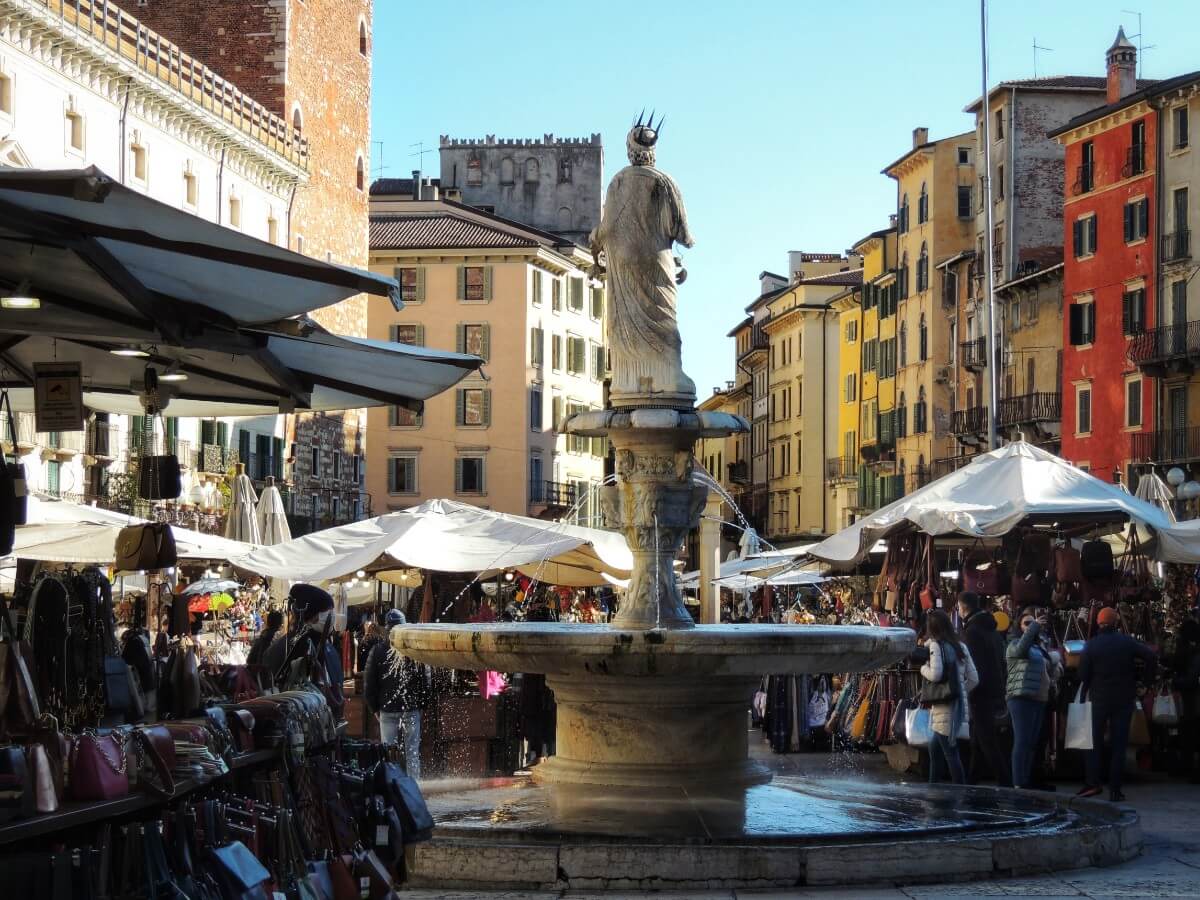
It is so fanciful, quaint, and picturesque a place, formed by such an extraordinary and rich variety of fantastic buildings, that there could be nothing better at the core of even this romantic town: scene of one of the most romantic and beautiful of stories.
When Charles Dickens arrived in Verona during his epic 1844 Italian voyage immortalised in Pictures From Italy, he was worried that the city’s reality might chime unfavourably with the Romeo and Juliet inspired Verona of his imagination. He needn’t have worried. ‘I was no sooner come into the old market-place,” he writes, ‘than the misgiving vanished.’ The vibrant marketplace that Dickens describes is Piazza delle Erbe, one of Italy’s most beautiful squares and the beating heart of Verona. The piazza began life as the Forum of the ancient city, and is today home to some of the city’s most impressive landmarks including the medieval Palazzo della Ragione, the soaring Torre dei Lamberti and the sumptuous Baroque Palazzo Maffei. Look out too for the nearby Arco della Costa, an arch from whose roof hangs a whale’s rib - the calling card of a long-vanished local pharmacy whose powdered whale concoctions were considered great curatives in the Middle Ages.
Alfred de Musset: The Tomb of Juliet
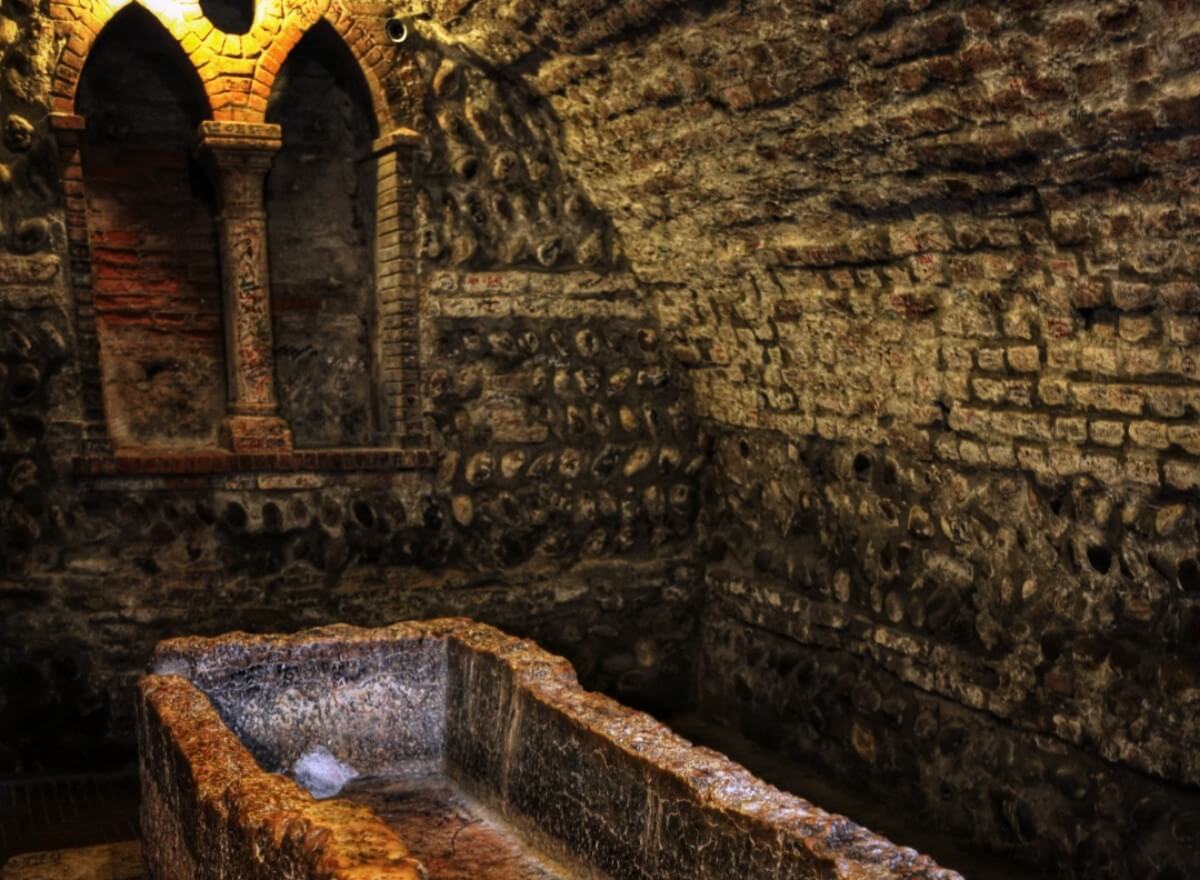
“Do not leave without throwing a flower on Juliet’s tomb… the power of the Scaliger family is long extinguished, but the love of the starcrossed youths lives on in our memories, and will do so for as long as poetry exists”.
Our literary guide to Verona finishes where it began - with the tragic fate of Shakespeare’s doomed young couple. The so-called tomb of Juliet is an ancient sarcophagus of red marble in the subterranean crypt of the ex-monastery of San Francesco al Corso, now the city’s Frescoes Museum. The sarcophagus was discovered in the monastery’s cemetery in the 19th-century, and soon became associated with the final resting place of Shakespeare’s tragic heroine. It wasn’t long before everyone’s favourite dashing Romantic Lord Byron was on the scene, who describes a ‘plain, open, and partly decayed sarcophagus, in a wild and desolate conventual garden once a cemetery now ruined to the very graves. The situation struck me as very appropriate to the legend, being blighted as their love.’
The deconsecrated monastery isn’t nearly so blighted these days. Taking advantage of the site’s newfound popularity, in the 1930s city authorities transformed San Francesco al Corso into a museum devoted to frescoes gathered from various palaces and churches across town. Juliet’s sarcophagus was moved into the more suggestive surroundings of the crypt, highly evocative of the dramatic final scenes of Shakespeare’s tragedy.
We hope you enjoyed our literary guide to Verona! Through Eternity Tours offer carefully crafted expert-led tours of Verona and the Veneto. If you’d like to see the city of Romeo and Juliet in the company of an expert local guide, then be sure to check out our Essential Verona Tour!
MORE GREAT CONTENT FROM THE BLOG:
- Everything You Need to Know to Visit Venice
- Where to Stay in Venice
- What to Do on Your First Trip to Venice
- How to Visit St. Mark's at Night
- 10 Romantic Things to do in Venice
- The Amazing Islands of Venice
- All You Need to Know About Gondolas in Venice
- 10 Dishes You Need to Try in Venice

